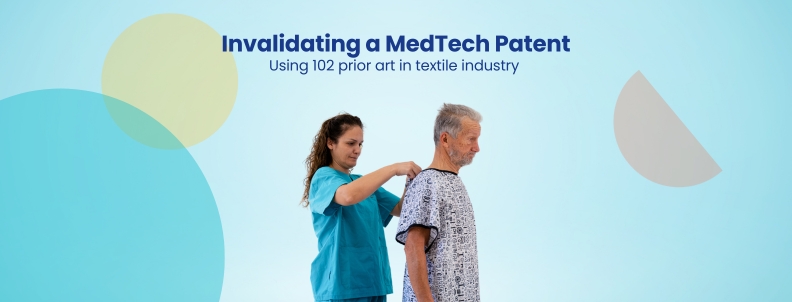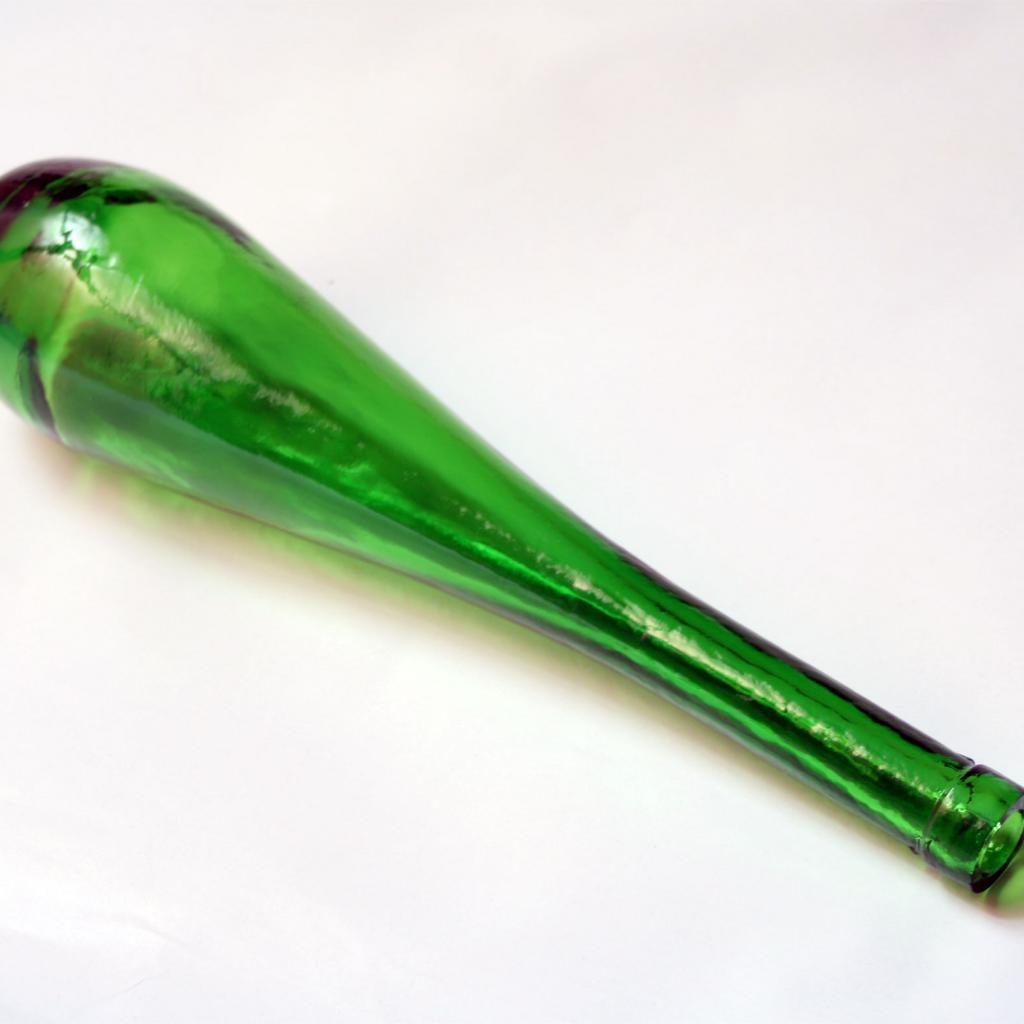During invalidation searches, I often stumble upon 102 prior art from my surroundings. It might fascinate you how I discover them even when I’m not looking for them consciously. However, it’s second nature to me now.
Recently, I cracked a patent invalidity case in a similar situation, but before I share the complete story, let me give you some background of the case.
Case Background: The Complexity of a Prosthetic Heart Valve Patent
Jonathan, a patent attorney from a recognized US law firm, requested a patent invalidation case from the medical device domain. While studying the patent in question, I saw that the technology was linked to the design of a prosthetic heart valve. It specifically talked about the geometry of the leaflets with two tabs as primary and secondary tabs and their respective attachment mechanism to the frame or stent. The invention had two parts –
a) Leaflet Structure: To be precise, these leaflets have a body section, two opposing primary side tabs extending from opposite ends of the body section, and two opposing secondary tabs extending from the body section adjacent to the primary side tabs.
b) An attachment mechanism: The secondary tabs are folded about a radially extending crease, such that the first portion of the secondary tabs lies flat against the body portion of the respective leaflet. Then, the secondary tabs are folded about an axially extending crease such that a second portion of the secondary tabs extends in a different plane than the first portion, and the primary side tabs extend radially outwardly through respective window frame portions to a location outside of the frame and are sutured to the secondary tabs.
At first, I had multiple interpretations of the mechanism described in the patent, but I was uncertain which one to proceed with. That’s when I decided to visualize the process mentioned
Using a piece of paper to visualize the attachment/folding mechanism
While I could keep making multiple interpretations, visualization with a physical model was the best way forward. I took a piece of paper as the ‘leaflet of the heart valve.’ Then, I cut that from one side into two halves – representing the two tabs of the leaflet – the primary and secondary ones (figure below).
As shown in the figure below, I added an eraser for the attachment mechanism.
After identifying a representation encompassing all the subject patent claims, I scheduled a call with Jonathan to share my findings. During our conversation, I presented the representation encompassing all the subject patent claims. Jonathan immediately responded, saying, ‘You’ve got it right. Your interpretation aligns perfectly with how we approach these claims.’ He concurred with my interpretation and appreciated the visual strategy I had employed to comprehend the claims. This marked a significant achievement in the case.
Following this successful step, I started with the standard search phase.
The initial stage of finding prior art for the medical device.
I started the search using the narrow and broad search logic, citation checking, inventor and assignee exploration, and standard search in multiple patent databases such as Google Patent, Derwent Innovation, Patsnap, Orbit, etc.
I explored all the above aspects of the patent in combination and permutation of various keywords of prosthetic devices (heart valves), their types, keywords related to the structural geometry of such devices, etc. Additionally, I checked patents from the targeted classification, such as A61F2/24 (Related to prosthetic heart valves), A61B2018/00369 (devices for transforming heart valves), A61L2430/20 (reconstruction of the heart valve), Y10S623/90 (stent for heart valves) and others.
Even with an extensive search, nothing promising turned up. Most results discussed the leaflet design with multiple tabs but not explicitly the required primary and secondary tabs design. Also, they were not disclosing the required leaflet attachment mechanism the way I was looking for.
At this point, I had already covered 50-60% of the search in the medical device domain. However, after five days, I was still without any solid leads. A bit frustrated, I closed my laptop. Doubts crept in, and I wondered if what I sought even existed. Nevertheless, thoughts of what I missed or where else I could look raced through my mind. Despite the time crunch, my determination to leave no stone unturned kept me going.
It Was Just The Beginning…
The weekend was over, and I was getting my niece ready for school before heading to the office. It was at that point that I suddenly noticed that her shirt had a design that looked somewhat similar to my leaflet design, like two tabs attached. While I did not give much thought to it then, as I resumed my work later that day, I couldn’t shake the idea off.
So, I decided to check out the textile industry to find a similar concept of attachment mechanism and prove the lack of inventiveness in the patented technology.
During the team meeting, I shared this idea with my colleagues. To brainstorm further on it, we visualized the idea on paper to make a clear interpretation of the mechanism in the textile industry.
Here, the red indicates the attachment region, which resembles our sought mechanism. Once we were confident of this approach, I discussed the same with Jonathan, and he gave us a green signal to proceed.
Next Phase: Digging Into The Textile Industry
My team and I began searching for a product in the textile industry, hoping to find something useful. We explored all the products that had a similar design to Tank Tops, Crop Tops, Camisole Tops, Sleeveless Tops, Spaghetti Tops, Woven/Nonwoven/Knitted Vests, Blouses, Grocery Bags, Tote Bags, Belts with or without buckles, Harnesses, Half-Sleeved Shirts, Cuff Shirts, Kids Top Straps, Seat Cushion Belts, Baby Rompers, Diapers, Patient Gowns, Dungarees, Boat Flag Attachments, Guitar Holder Strap Attachments, Fabric Products that seem to be fastened with Hinge-Joint, Gym Equipment Straps, and more.
We were determined to make a breakthrough.
After exploring different products on various websites, I turned to Pinterest to search for different types of tops. I tried different combinations to capture the required top attachment, like “side attachment” or “sleeve attachment,” but unfortunately, I couldn’t find any relevant products.
Disappointed, I was about to shut my laptop once again when a pop-up or image suggestion appeared on my system from Pinterest. Since I had been scouring it for the last 2-3 hours, I clicked on it with little hope.
My eyes couldn’t believe it! There it was,


This product discussed the concept of knitting tank tops and vests that were easy to put on babies without pulling them over their heads. The design featured an open shoulder and side secured with buttons, allowing the garment to be folded in the middle. While this design was similar to our invention, it didn’t mention the middle portion attachment due to the middle knitted suturing.
Nevertheless, it provided a good starting point. The next day, I continued my search with hope. Despite not finding a comparable product, I trusted my research and shifted my search to patents in the textile industry with similar concepts.
Back To Basics
As the deadline was near, we focused on relevant classes in the textile industry to review patents. I came across class A41D13/129, which is related to wearing an easily openable piece of cloth during surgery. However, I faced a challenge when I narrowed it down to 1,200 patent hits to analyze in this class alone.
I restricted the broad class-based patent set with some targeted relevant attachment/folding concept keywords to narrow the patents. This allowed me and my team to analyze around 400-500 patents. The approach I used was successful, as we did not end up analyzing irrelevant patents.
Finally, our manual analysis paid off. We hit the bulls-eye with the design we sought in not one but three patents!
- An easily-openable single-piece garment with a similar folding/attachment mechanism (US5564123A)


- A design of hospital gowns with a similar folding mechanism (US3490072A)


- A design of easily openable innerwear(EP1929889A2)
After thoroughly examining the findings, I compiled them and sent them to Jonathan. I was eagerly awaiting his response when, finally, at noon, I received an email.
“The references you sighted in your e-mail yesterday are also interesting…Thanks a lot, Divyani.” the words played like a lullaby in my mind.
That night, I slept like a baby.
Conclusion
“If it exists, we will find it.” – This thought never lets GreyBians settle, as you witnessed in this case. This mindset drives us to constantly search for new and innovative ways to help our clients. Because, in the field of prior art searching, there is no one-size-fits-all approach. Each case is different, and at GreyB, we are taught to evolve our strategies with each project’s need.
If you are facing a roadblock in proving the invalidity of a patent, GreyB’s prior art search expertise will get you the solution you need. Ready to go on another invalidation journey with GreyB? Just click the button below to get started.
Authored by: Divyani, Life Sciences Department
Edited by: Annie Sharma, Editorial Team











